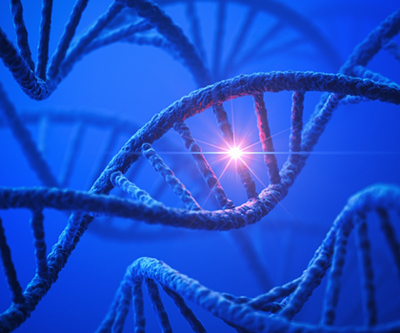
Studying rare skeletal diseases can improve understanding of how bone formation is regulated. The Baron Lab and colleagues evaluated a boy with a complex skeletal disease resulting in some areas with increased bone density and other areas with decreased bone density. Using genetic sequencing, they identified a unique mutation in SP7, a transcription factor critical for bone formation. Transcription factors are proteins that control gene expression—the degree to which specific genes are turned “on” or “off”—by binding to nearby DNA.
To establish that the SP7 mutation was the cause of the boy’s disease, the scientists introduced an analogous mutation into mice. Indeed, these mice developed a skeletal disorder. Moreover, they differed from mice lacking SP7, suggesting that the novel mutation does not simply cause a loss of SP7 function.
Further experiments revealed that the mutation redirects the binding of SP7 to DNA. Transcription factors bind to certain sequences in the DNA alphabet (A, C, G, and T). Typically, SP7 binds to AT-rich regions of DNA. The researchers found that the SP7 mutant instead binds to GC-rich regions, causing gene expression changes that lead to abnormal bone formation.
The work highlights the importance of SP7’s typical binding pattern in bone formation. It also demonstrates how a genetic mutation can change the DNA-binding specificity of a transcription factor, resulting in human disease. This suggests the possibility that other rare genetic disorders could be caused by mutations in transcription factors and other molecules involved in regulating how cells turn DNA instructions into action.
Learn more about the Development Endocrinology, Metabolism, Genetics and Endocrine Oncology Group: https://www.nichd.nih.gov/about/org/dir/affinity-groups/DEMG-EO
 BACK TO TOP
BACK TO TOP